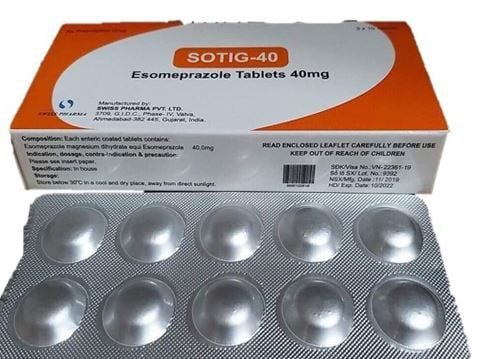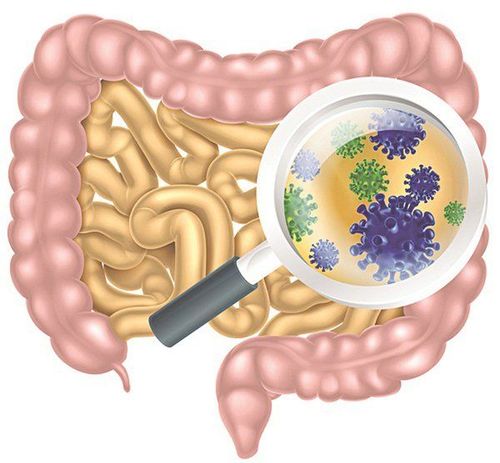This is an automatically translated article.
Post by Master, Doctor Mai Vien Phuong - Gastrointestinal Endoscopy - Department of Medical Examination & Internal Medicine - Vinmec Central Park International General Hospital.
Helicobacter pylori is a bacteria that infects the stomach environment and is associated with gastrointestinal diseases. However, since the 1980s, the relationship between helicobacter pylori infection and manifestations has not only affected the gastric system but also has been associated with extragastric gastrointestinal pathologies.
1. Helicobacter pylori infection and inflammatory bowel disease (IBD)
One of the most studied pathologies in the digestive field, IBD is a collection of chronic disorders that affect the gastrointestinal tract and include Crohn's disease (CD), ulcerative colitis (UC). Although the mechanisms involved in IBD origin are extensively studied, they are poorly understood and may include genetic, immunological, and environmental interactions. Among these complex interplays, the link between microbiota and IBD has been extensively explored, interestingly studies have shown a protective role for H. pylori gastric infection in that situation.
In this sense, a meta-analysis including 60 studies found a negative association between that infection and IBD (OR = 0.43, 95% CI: 0.36-0.50, P < 1-10 ). Besides, such a protective relationship was stronger in CD (OR = 0.38, 95% CI: 0.31-0.47, P < 1 -10) and in unclassified IBD (OR = 0.43, 95% CI: 0.23-0.80, P = 0.008) when compared with UC (OR = 0.53, 95% CI: 0.44-0.65, P < 1 -10 ) [ 13 ]. In addition, a cohort conducted in Taiwan observed an increased risk of developing IBD after eradication (adjusted risk = 2.15; 95% CI: 1.88 -2.46, P < 0.001). Furthermore, H. pylori infection seems to not only reduce the risk of IBD but also minimize the clinical severity of the disease. A recent study evaluating CD patients observed that helicobacter pylori infection was negatively associated with a leaky or tight phenotype (OR = 0.22, 95% CI: 0.06-0.97). P = 0.022), as well as with active colitis (OR = 0.186, 95% CI: 0.05-0.65, P = 0.010). One hypothesis that might justify these findings is that such infection induces the release of interleukin (IL)-18, which leads to the development of FoxP3-positive regulatory T cells, as well as reduced proliferation of FoxP3 regulatory T cells. maturation of antigen-presenting cells, this reduces intestinal inflammation. Another possible mechanism is that the presence of H. pylori neutrophil-activating protein reduces inflammation by activating the number 2-like receptor and stimulating IL-10 production. Finally, the composition of the gut microbiota appears to play an important role in the development of IBD, which is significantly influenced by H. pylori eradication.
2. H. pylori infection and GERD
Still associated with gastrointestinal diseases, GERD is characterized by abnormal levels of gastric reflux through the esophagus, leading to damage to the organ's lining, among other outcomes. Burning, vomiting, sore throat, cough, chest pain, and difficulty swallowing are the most common symptoms in that condition.
The role of H. pylori infection in GERD is controversial because the associated gastritis can lead to increased or decreased acid secretion, depending on the area of the stomach affected. On the one hand, H. pylori-associated gastritis causes increased secretions, exacerbating GERD. On the other hand, yellow gastritis leads to decreased acidity and plays a protective role against that disease. Such protective behavior could be explained by bacterial genetic factors affecting the positivity of the H. pylori cytotoxin-binding A (CagA) gene, once CagA-positive strains are involved. to atrophic gastritis and inhibit acid secretion, suggesting that they may protect GERD.

3. H. pylori infection and halitosis
Another extragastric manifestation suggested to be associated with H. pylori infection is halitosis . In 2017, HajiFattahi et al attempted to demonstrate this correlation, showing that among patients with halitosis, 91% were positive for H. pylori, compared with only 32% in controls (P < 0.001) ). However, halitosis has also been linked to poor oral hygiene. In summary, Helicobacter pylori is a bacterium that infects the gastric environment and has been implicated in gastrointestinal diseases, including peptic ulcer and gastric adenocarcinoma. However, since the 1980s, studies have shown that infection with helicobacter pylori not only affects the gastric system, but is also associated with hepatobiliary, neuromuscular, cancer, and pathological diseases. digestion outside the stomach.
Please dial HOTLINE for more information or register for an appointment HERE. Download MyVinmec app to make appointments faster and to manage your bookings easily.
References: Santos MLC, de Brito BB, da Silva FAF, Sampaio MM, Marques HS, Oliveira e Silva N, de Magalhães Queiroz DM, de Melo FF. Helicobacter pylori infection: Beyond gastric manifestations. World J Gastroenterol 2020; 26(28): 4076-4093 [PMID: 32821071 DOI: 10.3748/wjg.v26.i28.4076]














